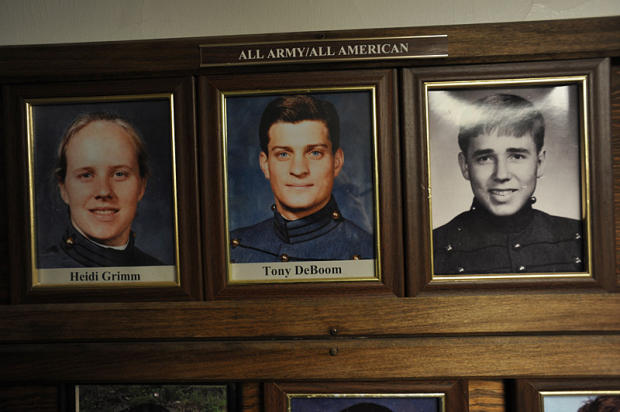West Point – Monuments & Lore
Everywhere they turn, West Point triathletes are drenched in legendary heroes and stirring history that goes far back in time beyond the Big Four and the original Iron Men. Bound by the strict Cadet Honor Code, if a Black Knight triathlete sucks wheel, they are bound to turn themselves in.
Next to Washington DC, London and Kim Il Jong’s rec room, West Point may be the world headquarters for statues honoring military heroes of the past. Everywhere stirring mottos, heroic monuments, plaques and murals exhort today’s cadets to bravery, leadership and integrity. Equally concerned by the mistakes of the past as well as the victories, West Point drums the lessons of atrocities at My Lai and Abu Ghraib to make sure tomorrow’s military leaders keep our troops living up to the highest ideals.
Even the triathlon team and their faculty advisers and coach see their sport as a crucible with lessons that apply to their future appointments in Samarra and other combat zones around our strife torn the planet. And so they also pass down in Saturday night pizza parties the stories of triathlete who came before and their deeds. When some of your triathlon teammates have spent a tour in Iraq, peer pressure by example make it harder to slack off.
Cadets Brian Lagasse and Kari Vahle, triathlon team members, stand in formal dress gray before stained glass homage to famous generals and battles.
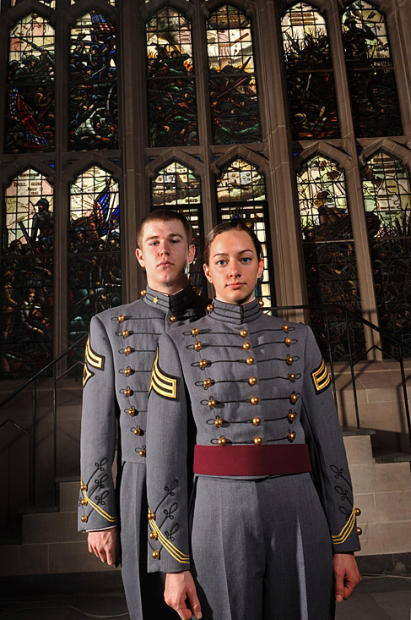
Douglas MacArthur, Class of 1903, and some fellow cadets put the reveille cannon on top of the Clock Tower one night. MacArthur led a brilliant campaign in the South Pacific, made good on his famous “I shall return” promise, said “Old soldiers never die, they just fade away” in his address to Congress after he was relieved of his Korean command by Harry Truman, and made stirring “Duty, Honor Country” speech at West Point in 1962.
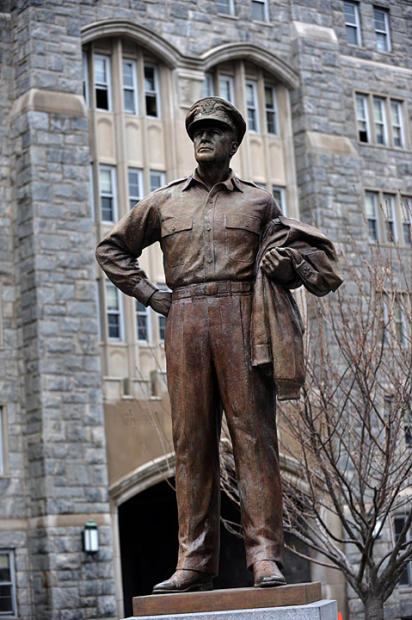
Neogothic barracks and Cadet Chapel looming atop a hill were constructed in the early 20th Century. They are made of granite with a predominant black and gray hue and giving the Academy the look of a medieval castle fortress.
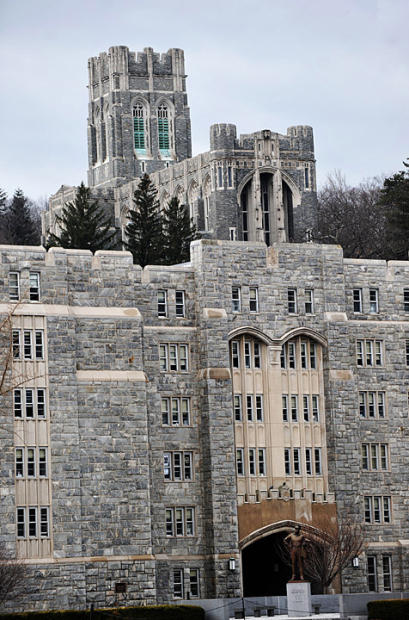
A fragment of a 500-yard Great Chain which was stretched across the river at the West Point garrison during the Revolutionary War to stop British ships from sailing up the Hudson.
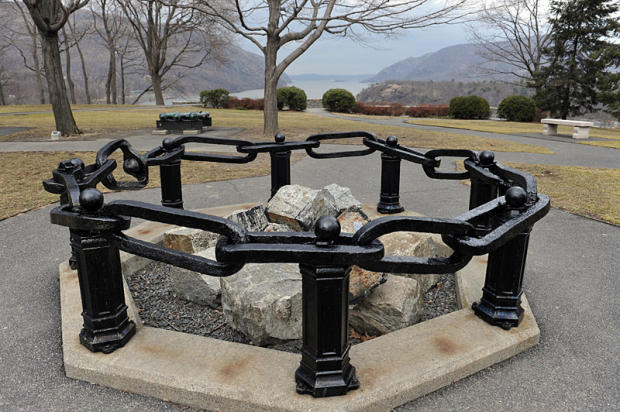
This vast mural in the southwest wing of the mess hall depicts the history of the weapons of warfare used in the twenty most decisive battles in history. Completed in 1936, it was one of the largest unbroken interior paintings in the world, with an overall surface of 2,450 square feet
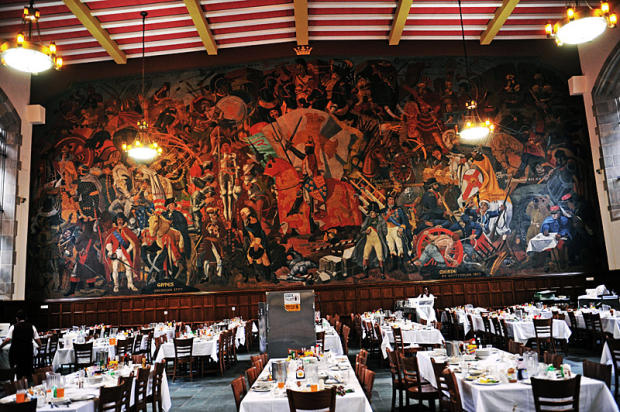
This Thomas Jefferson quote, said to George Washington: “The power of making war often prevents it,” is around the corner from a popular cadet coffee shop.
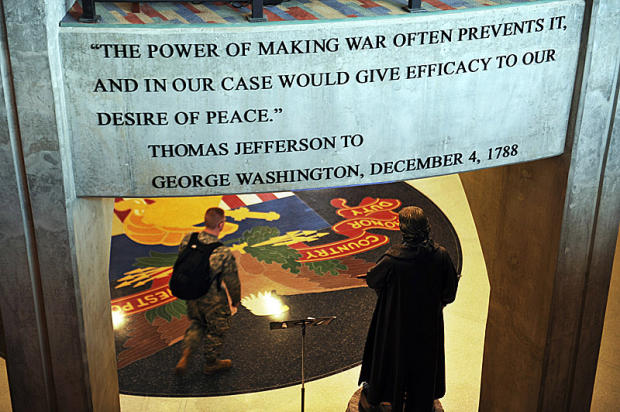
“L’Ecole Polytechnique Monument” is a statue given to West Point in 1919 by students of the French school, a replica of a tribute to French cadets who took part in the defense of France in 1814.
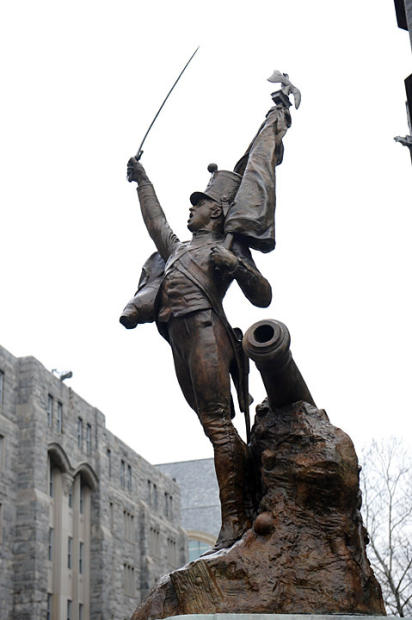
Sylvanus Thayer, Class of 1808, served as superintendent from 1817-1833. Known as “The father of the Military Academy,” he strengthened the faculty, toughened academic standards and made the honor code and integrity a top priority.
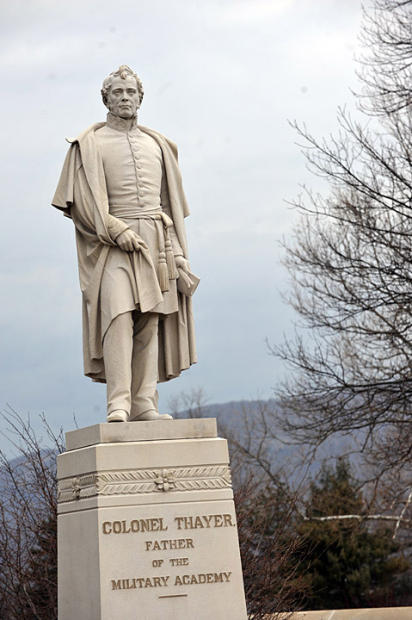
Cadets going into a tough exam or sporting event, or any other challenging encounter, come here and rub Lincoln’s head for luck.
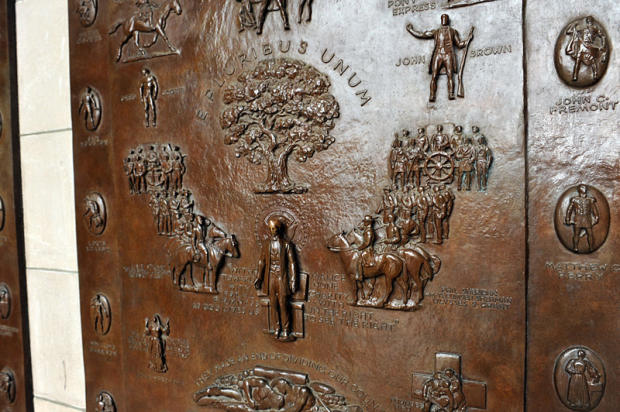
. Memorial to Major General John Sedgwick, killed at the Battle of Spottsylvania in 1864. Legend holds that a cadet in danger of failing a course should go to Sedgwick the midnight before the final exam, in full dress gray, bearing arms, and spin the rowels on the monument’s spurs for luck.
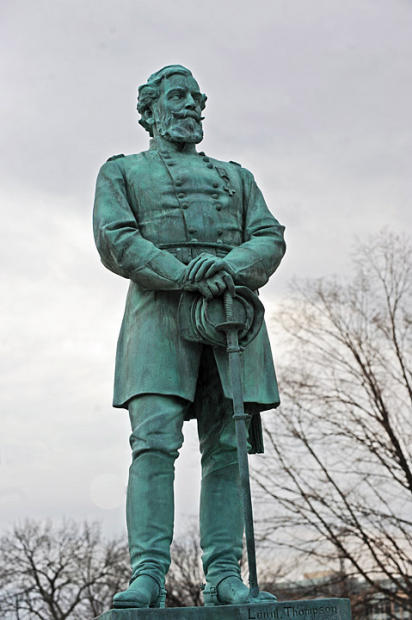
Beat Navy Tunnel
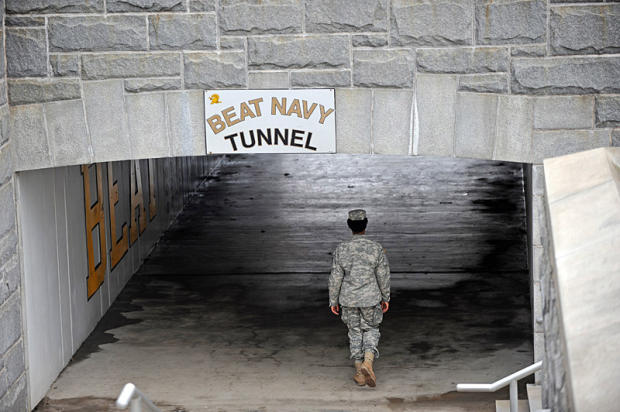
Beat Navy sign outside commandant’s quarters, the oldest building at West Point.
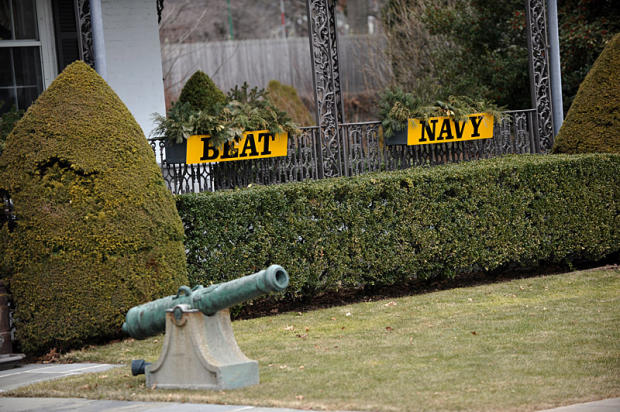
Stirring George Washington statue stands outside the cadet mess hall.

The Cadet Honor Code puts West Pointers to a higher standard, a crucial element the military should remember in the War on Terror. And a constant reminder for triathletes not to draft.
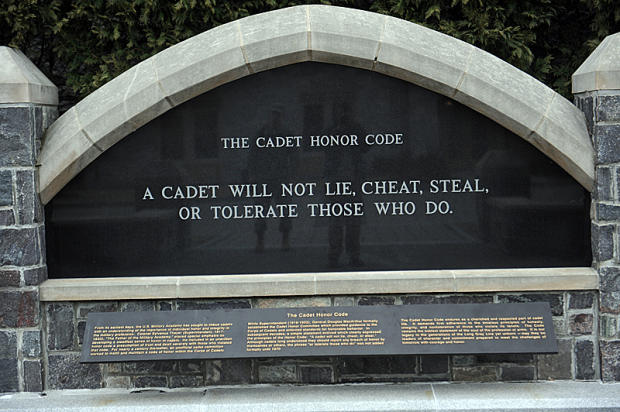
West Point counts two US Presidents, major military leaders in every US war, all 60 general officers in the major conflicts of the Civil War, and 74 Medal of Honor Winners.
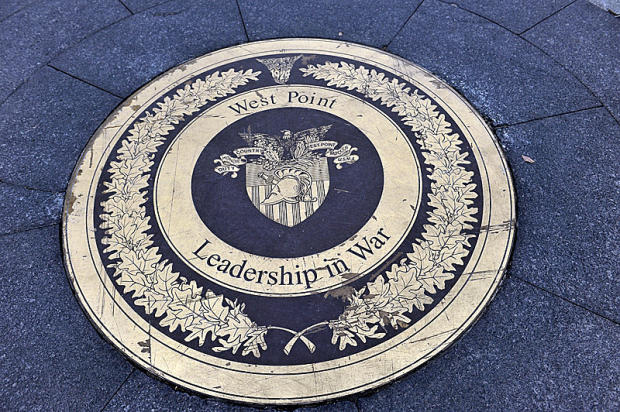
. Duty Honor Country — It’s West Point’s Motto, and they take it seriously, ever since former West point commander Benedict Arnold sold out to the loser Brits.
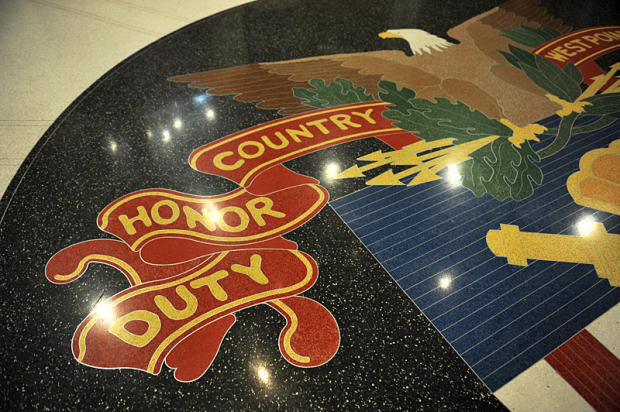
West Point also honors it sports heroes. Mike Krzyzewski, famed Duke basketball coach and an Academy alum who played for Bobby Knight while at West Point, gets an props in an enclosed glass case in Arvin Gymnasium.
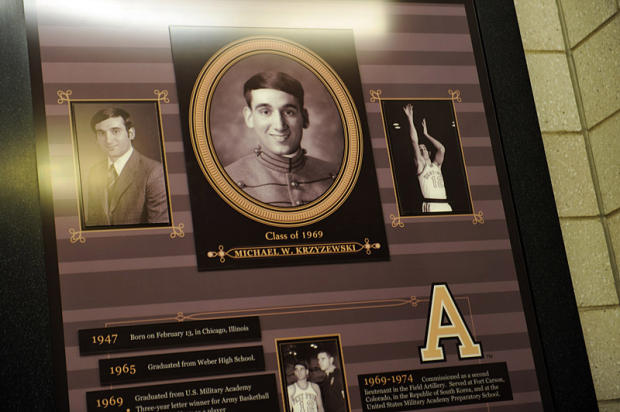
A statue of Ulysses S. Grant is harder to find on the 15,700 acre site than MacArthur, Ike and Washington. So a small building with his name on it will have to do. But this West Point alum won the Civil War, was elected US President, wrote the best ever US Presidential autobiography – and did it all with a legendary thirst for strong drink.
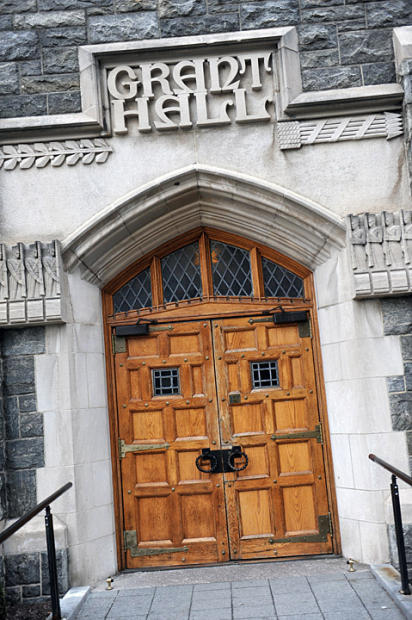
Michie Stadium was named by Sports Illustrated as the third most beautiful and hallowed college football venue in the country. It is named for Dennis Michie (pronounced Mike-y), Class of 1892, Army’s first football captain, who was killed in action in San Juan Cuba in 1898.
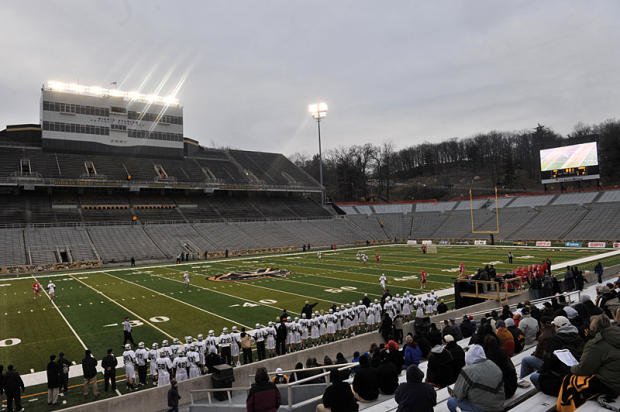
The 2009 West Point Triathlon has its own modest monuments to great West Point triathletes of the past: Heidi Grimm, (1989) Tony DeBoom (1991) and Michael Hagen (1984).
